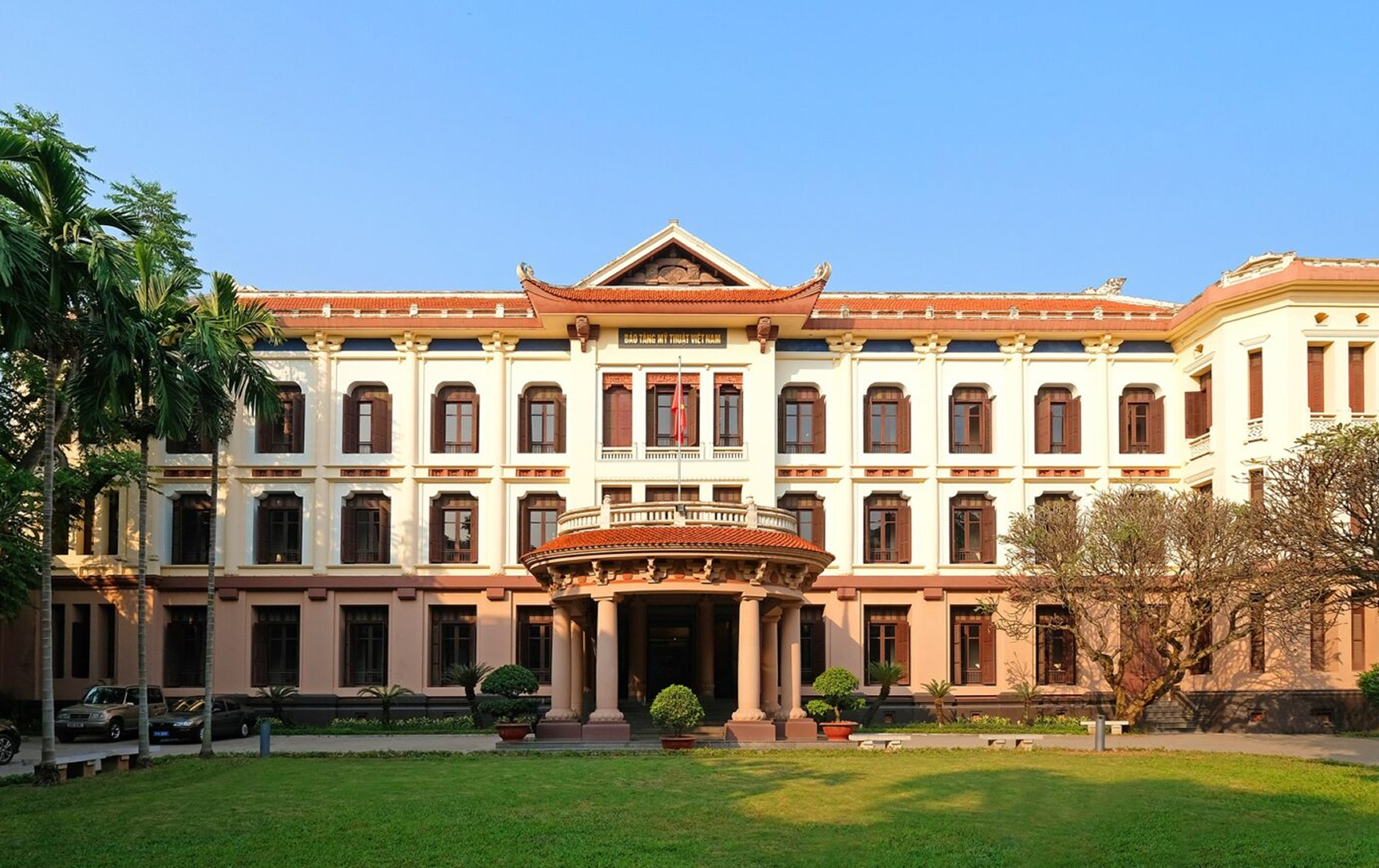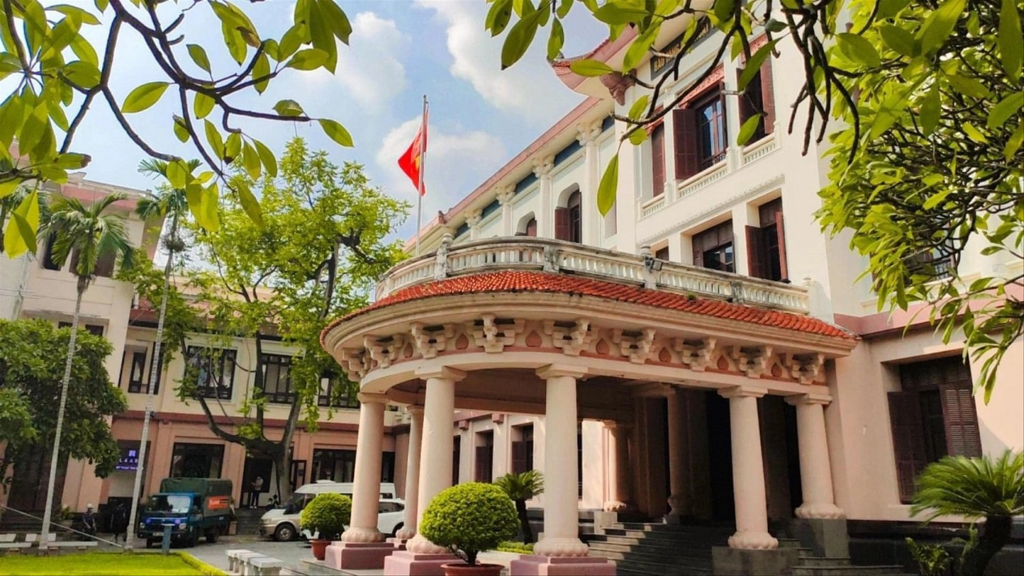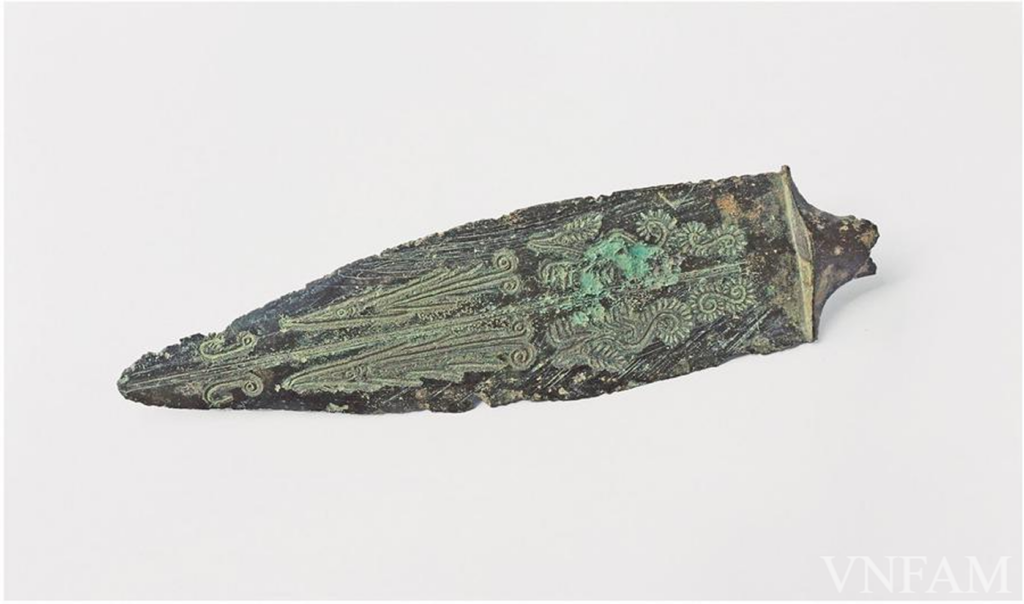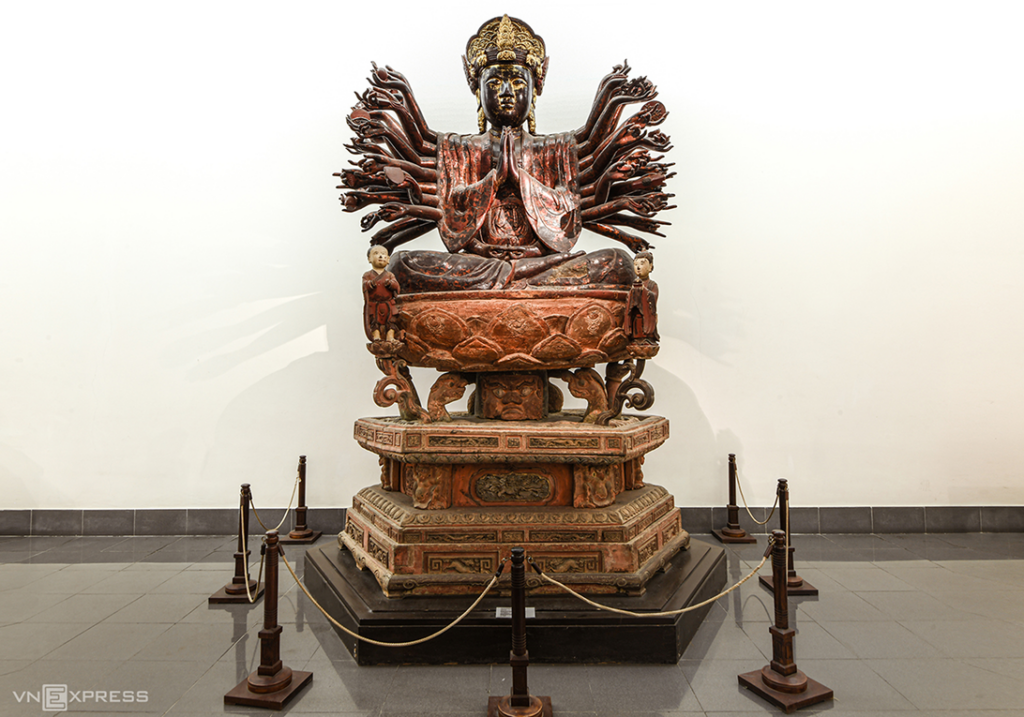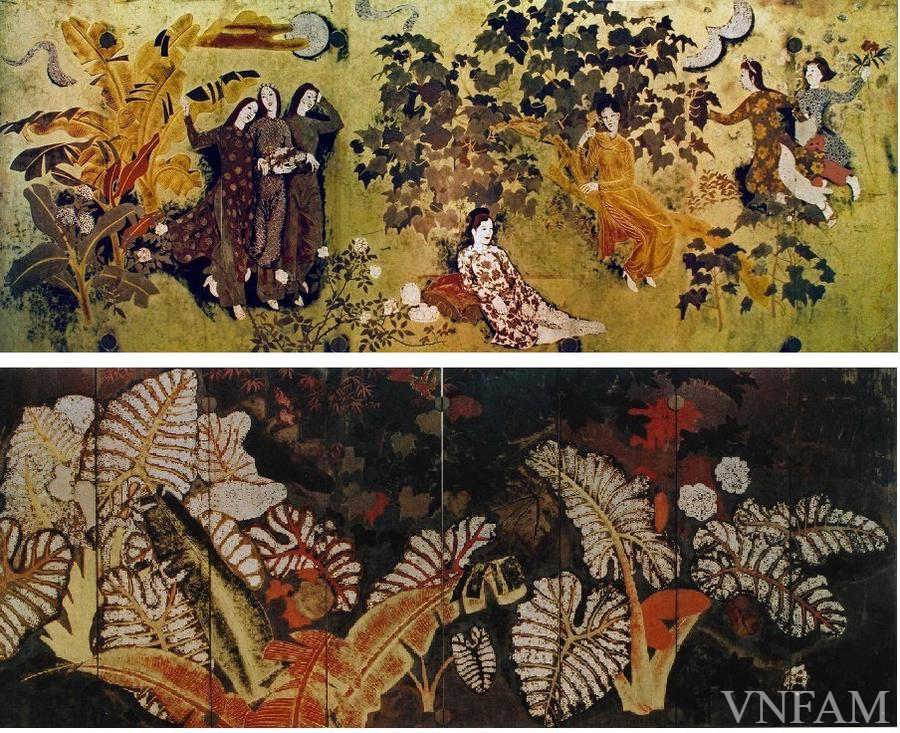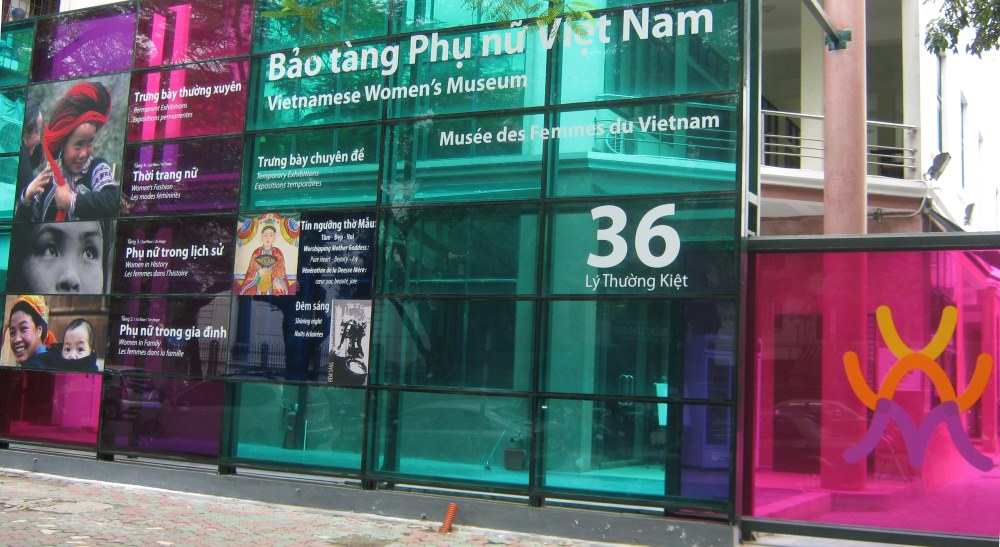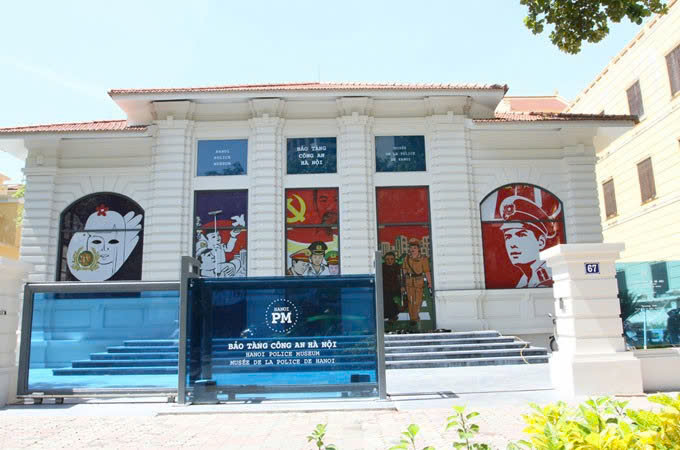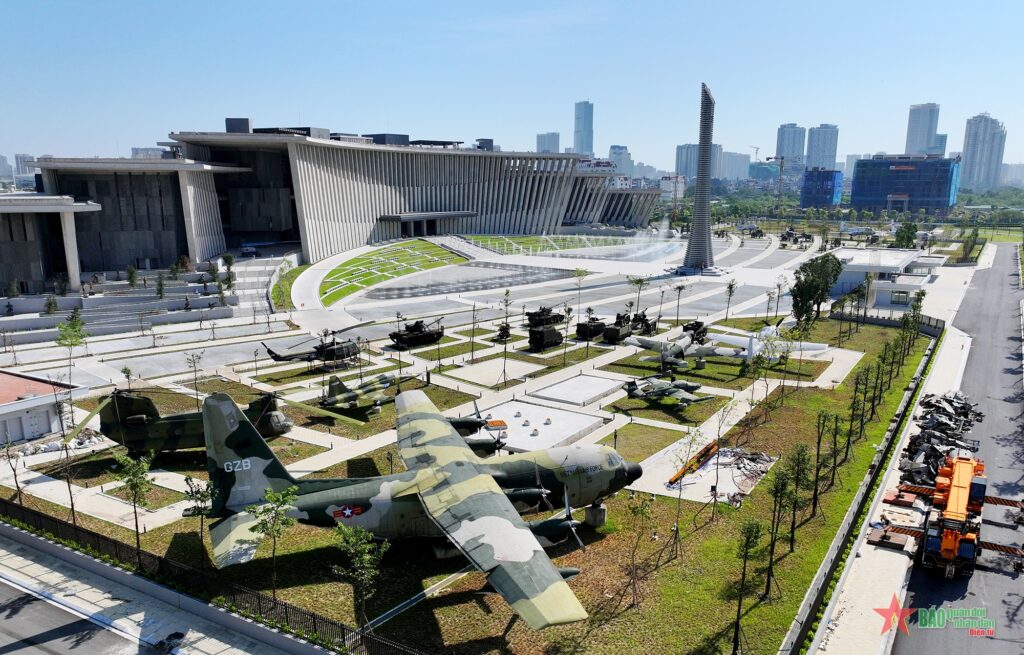Location: No. 66 Nguyen Thai Hoc Street, Dien Bien Ward, Ba Dinh District, Hanoi City
Opening hours: 8:30am – 17:00pm Everyday
Ticket price:
Entrance fee
-
- Adults: 40,000 VND
- Students: 20,000 VND
- Children and pupils from 06 to 16 years old: 10,000 VND
- People with severe disabilities and children under 6 years old: Free
Guided tour: click here for more detail
Hotline: (024) 3823 3084 – 032 666 5664
Email: btmtvn@vnfam.vn
Website: vnfam.vn
Vietnam National Fine Arts Museum
Art serves as a canvas that expresses spiritual, cultural, and lived values. The art of a nation reflects all of these dimensions while also embodying the historical trajectory of that nation. The preservation, conservation, and promotion of such artistic and historical developments are essential to safeguarding cultural heritage and national identity. The Vietnam National Museum of Fine Arts stands as one such institution dedicated to this mission.

HISTORY
Originally constructed in the 1930s during the French colonial period, the building that now houses the museum was known as “Famille de Jeanne d’Arc.” It served as a boarding school for the daughters of French officials stationed in Indochina. This architectural structure exemplified the French colonial style prevalent in Hanoi during that era.
Following Vietnam’s independence, the Vietnamese government repurposed the building to serve as a center for preserving and showcasing the nation’s artistic heritage. In 1962, extensive renovations were undertaken to adapt the structure for its new role as an art museum. These modifications thoughtfully integrated traditional Vietnamese architectural elements with the existing European design, symbolizing a blend of colonial history and national identity. The museum officially opened its doors to the public in 1966.
Between 1957 and 1960, prior to its transformation into a museum, the building played a significant role as the headquarters for the Polish delegation in the International Commission for Supervision and Control, which was established to oversee the implementation of the Geneva Accords in Vietnam. Subsequently, from 1960 to 1962, it accommodated experts from the Soviet Union. These periods highlight the building’s involvement in international diplomatic efforts during a tumultuous time in Vietnam’s history.
SPACE
General
Originally constructed in 1937 as an educational institution established for the daughters of French colonial administrators during the colonial period in Vietnam, the edifice currently housing the Vietnam National Fine Arts Museum exemplifies the architectural and urban planning vision of Ernest Hébrard. As part of his broader plan to transform Hanoi into a “garden city”, the building was situated within a thoughtfully organized urban landscape that integrated administrative, educational, and cultural functions.
The architectural design of the building is a compelling manifestation of Hébrard’s stylistic synthesis, wherein European classical forms are interwoven with traditional Vietnamese architectural motifs. Notable features include:
- Tiled roofs with curved eaves, which echo the distinctive silhouette of Vietnamese communal houses (đình) and temples. These elements not only establish a visual dialogue with indigenous architecture but also serve practical purposes in terms of climatic responsiveness, particularly within Hanoi’s humid subtropical environment.
- Intricate wooden panels and latticework, prominently featured in doorways and interior ceilings, reflect the high level of craftsmanship associated with Vietnamese carpentry traditions. This ornamentation introduces a tactile and cultural authenticity that contrasts yet complements the otherwise Western structural form.
- Arcaded corridors and tall, shuttered windows, emblematic of French colonial architecture, provide both solar shading and natural ventilation. However, in Hébrard’s design, these features are tempered with Asian-inspired detailing, which softens the rigidity of classical European proportions and integrates local decorative aesthetics.
The building’s symmetrical layout and open courtyards illustrate a hybrid spatial strategy. While grounded in French rationalist principles, the plan also resonates with the spatial organization of traditional Vietnamese domestic architecture, emphasizing openness, cross-ventilation, and accessibility to natural light—features well-suited to both its original educational purpose and its current function as a museum. - Finally, the use of stucco façades in muted, earthy tones—such as ochre and terracotta—stands in deliberate contrast to the stark whites and ornamental excesses typical of contemporaneous European architecture. These subdued color schemes allow the structure to blend harmoniously with the architectural vernacular of Hanoi’s historic Old Quarter.
VISIT THE MUSEUM
First Floor: Prehistoric and Ancient Art
Vietnamese fine arts have very early origins, nurtured, inherited, and continuously developed—from the relief carvings of human and animal faces on the stone walls of Đồng Nội cave in prehistoric Hòa Bình, to the shapes and patterns found on the pottery of the Phùng Nguyên, Đồng Đậu, Gò Mun, Sa Huỳnh, and Óc Eo cultures. This legacy extends to the finely crafted and famously beautiful bronze jars, drums, weapons, and production tools of the Đông Sơn culture from thousands of years ago.
4o
Second Floor: Religious and Folk Art Buddhist Sculptures
This floor features an array of religious art, including serene statues of bodhisattvas and arhats, reflecting Vietnam’s deep-rooted Buddhist traditions. These sculptures, often carved from wood or stone, exemplify the spiritual and artistic devotion of Vietnamese artisans.
Admire the National Treasure – the largest painted wooden statue of Guanyin in Vietnam. Guanyin vowed to have a thousand hands and a thousand eyes to bring peace and happiness to all living beings. The work is currently on display at the Vietnam Fine Arts Museum.
The statue is divided into 3 parts: the statue of Guanyin with 42 hands sitting on a lotus pedestal / the demon carrying the lotus pedestal with auxiliary details such as: Kim Dong, Ngoc Nu, dragon head in the middle / the hexagonal pedestal is elaborately carved with typical motifs such as: Garuda bird, cloud dragon, geometric dragon, fish transforming into dragon …

Third Floor: Modern and Contemporary Vietnamese Art
This section showcases works from the 20th and 21st centuries, including pieces influenced by socialist realism and modern art movements. Notable artworks reflect themes of patriotism, daily life, and abstract concepts, illustrating the evolution of Vietnamese art in contemporary contexts.
Nguyen Gia Tri’s “Binh Phong”, part of the collection of the Vietnam Fine Arts Museum, consists of eight panels, on which two large paintings are displayed. One side shows the painting “Thiếu nữ trong vườn” (Young Girl in the Garden), the other side shows the painting “Dọc Mùng”. The first side depicts a group of characters in various poses. The young girls in flowing ao dai, each age is depicted by the artist in different states and levels of emotion. That is the gentle, elegant, and self-possessed beauty of a noblewoman; the dreamy sadness of a young girl in love; or the innocence, naivety, and purity of young girls. The leisurely spirit blends between people and natural scenery.

This is one of the major lacquer paintings created by Nguyễn Gia Trí during his early period. “Bình phong” reflects the artist’s experimentation and contributed to the transformation of lacquer from a traditional craft material into a fine art medium, capable of meeting all the expressive demands of modern painting. The work was recognized as a “National Treasure” by the Prime Minister of the Socialist Republic of Vietnam in 2017.

